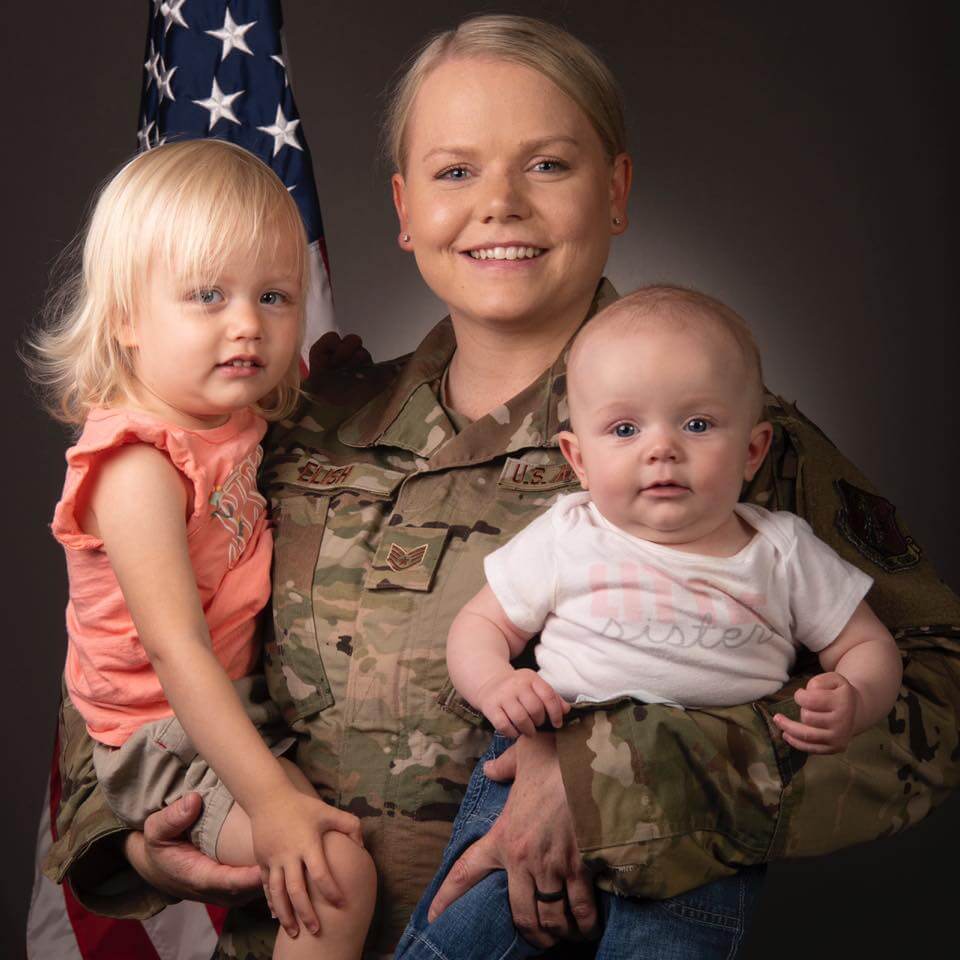When Staff Sgt. Kellyann Elish decided she was ready to start a family, she realized there would be some challenges. Her husband, Chris, works rotating 24-hour shifts as a firefighter where they live in Hanover County, Virginia. And she works full time with her Air National Guard unit – about 90 miles away at Joint Base Langley Eustis in Hampton, Virginia.
As part of the 192nd Wing’s public affairs office, Elish is also responsible for attending regularly scheduled drills one weekend a month. However, overlapping schedules sometimes make it difficult to find sporadic weekend child care for their daughters, Madison, 13; Lydia, 2; and Briella, 10 months.
Nevertheless, Elish said she does what she can to ensure she can continue her military service.
“I have bought my mom a train ticket for her to come down from New Jersey to watch the kids,” Elish said. “I’ve hired a nanny and had her work on drill weekends here and there. There have been times, once or twice, when I’ve missed a day of drill because I couldn’t find anyone to watch the kids.”
What Elish is facing isn’t something new or rare in the reserve component, especially for single or dual-serving military families. According to the Department of Defense’s latest Profile of the Military Community, nearly two-thirds of the more than 650,000 children whose parents serve part time are under 12 years old. More than one-third of those children are Army National Guard dependents.
Chief of the National Guard Bureau speaks to child care challenges
At this year’s Command Senior Enlisted Leader training forum, Army Gen. Daniel Hokanson, chief of the National Guard Bureau, addressed child care while speaking to his top-four priorities: people, readiness, modernization and reform.
He encouraged senior leaders from each of the 54 joint-force headquarters who have successfully alleviated child care challenges in their states to share solutions.
Current resources for service members include free subscriptions to nanny-finding websites like care.com and Sittercity.com via Military OneSource.
Additionally, Child Care Aware of America hosts a national network for child care resources and provides guidance for active-duty military members to access child care financial assistance. The organization also administers the Air Force’s Home Community Care (HCC) program, which provides child care during drill weekends, specifically for Air Force Reserve and National Guard members assigned to certain bases in the continental U.S.
Military regulations ‘more stringent’
Krystal Pillow, deputy chief of Parent & Provider Services at Child Care Aware, oversees provider recruitment for the HCC program in locations she called “child care deserts.”
On top of the COVID-19 pandemic diminishing the number of available providers, she said there are additional hoops caregivers must jump through when applying to be licensed and paid by the Department of Defense through assistance programs, including the hours providers can operate and how many children – depending on the ages – they can care for at one time.
One of the issues Elish has experienced involves finding a provider who can care for both a toddler and an infant at the same time.
“In some cases, they have to obtain special licenses to operate on the weekends,” Pillow said. “Each service also has its requirement for ratios, which are typically more stringent than the states’. We’ve seen that, and we know that to be true in military child care. The regulations and guidelines are more stringent than state guidelines.”
The Army National Guard plans to pilot a similar program to the Air Force’s by fall 2022. It’s unclear whether the Navy, Marine Corps or Coast Guard have a resource in place for their part-time service members.
Standardized child care unlikely
Nadine Moore, National Guard Bureau J-1 chief of Family Readiness, Training and Certification, said a standardized program for all services is unlikely as long as each reserve component is funded by their respective branch department.
A blanket program would also be difficult to implement as each branch has its own service-specific challenges.
“The biggest obstacle right now is just understanding where the demand is,” Moore said. “The Army National Guard is a distributed workforce. Unlike the Air Guard who drills at the wing, the Army Guard drills in many more places, in many more communities.”
Elish continues to rely on a nanny and out-of-town family for child care outside of traditional work hours. However, the nanny recently notified her she’d be moving out of state, leaving Elish on the hunt again for a caregiver who is able to take on an additional 12- to 13-hour shift, one weekend per month as part of their job duties. While she maintains her dedication to the oath she took, Elish understands “everyone’s situation is different.”
For more information or child care resources, visit Military OneSource.
Editor’s Note: Lucretia Cunningham served in the 192nd Wing, Virginia Air National Guard with Staff Sgt. Kellyann Elish from 2016-21.

